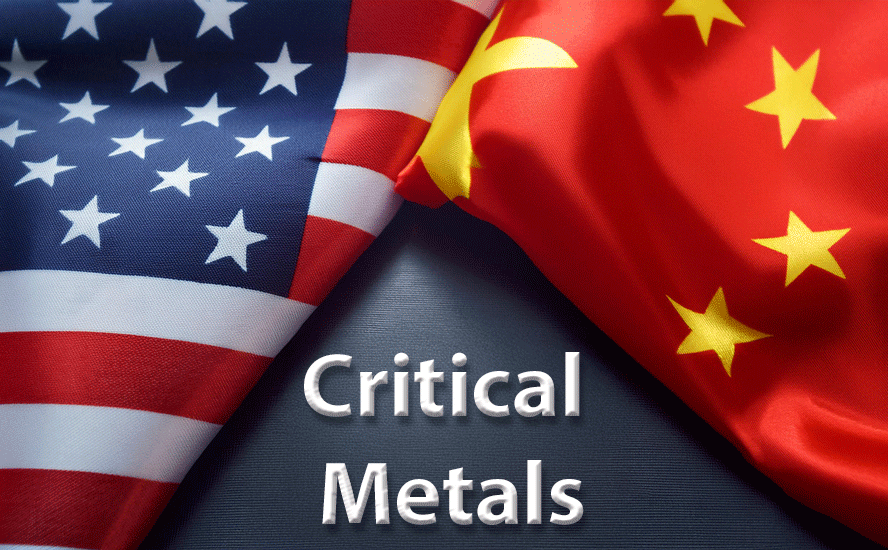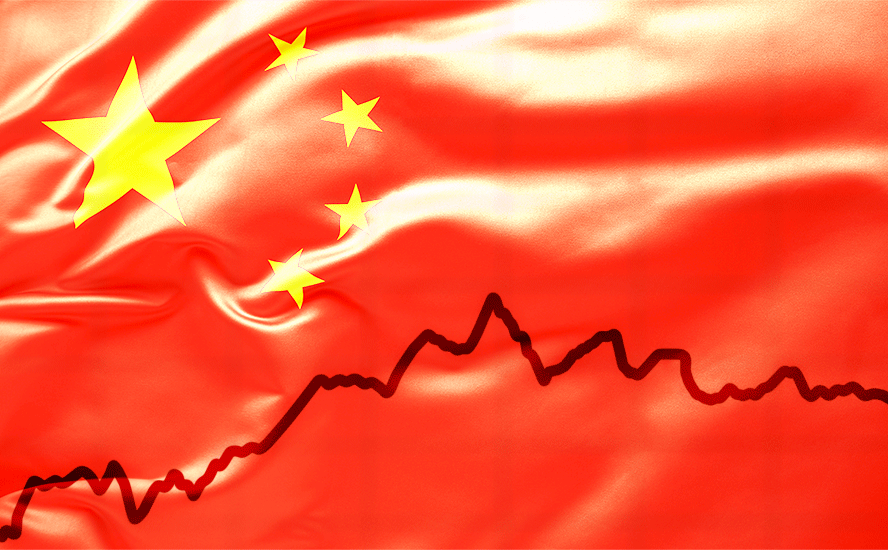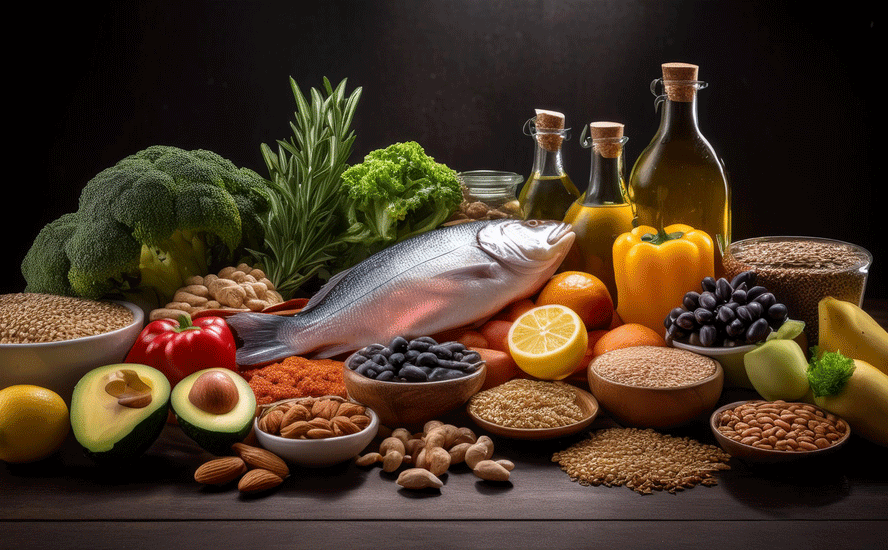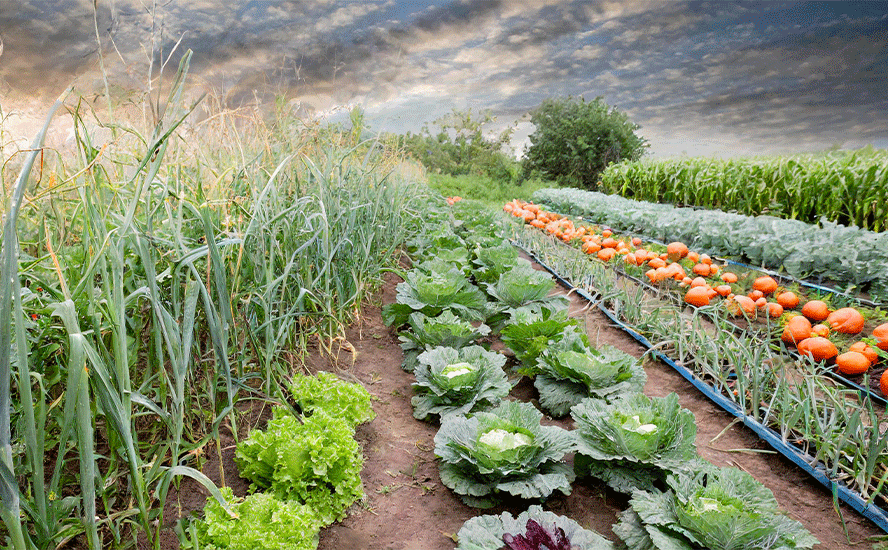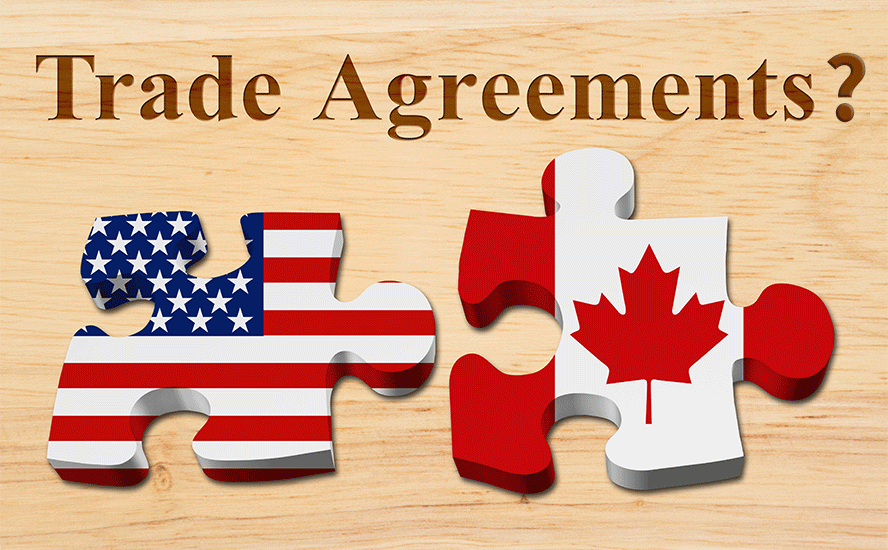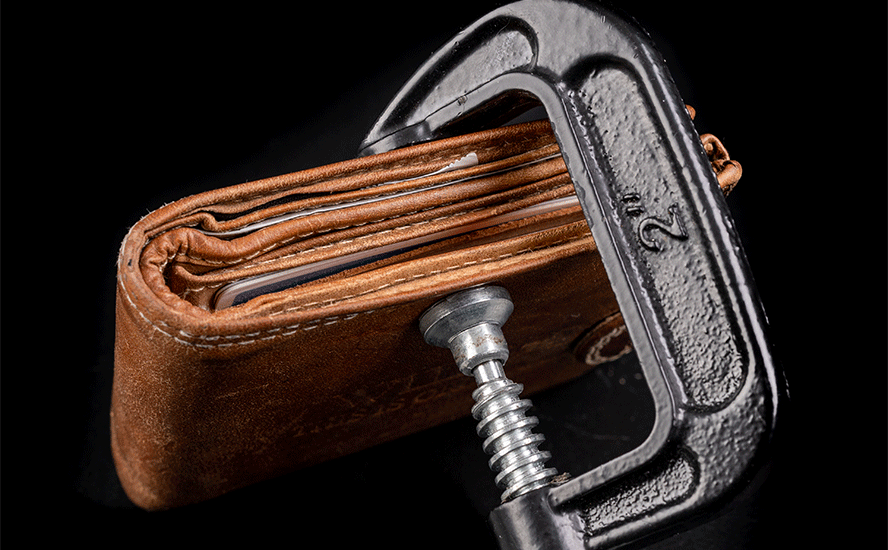BC’s killer whales v LNG

2018.11.10
The snow-capped mountains north of Vancouver are famous for skiing, but eight years ago they held the world’s attention for another reason: a powerful landslide that roared down Mount Meager near Pemberton at 230 km/h – around the speed of a Ferrari.
Now a new danger lurking high up in the glaciers could make the 2010 Meager Mountain landslide seem like a minor geological event – despite the 48 million cubic meters of debris that crashed through the Pemberton Valley, burying forest roads, several vehicles and heavy equipment, and wiping out two bridges. Luckily, nobody was injured or died.
It turned out to be the second largest landslide in Canadian history, second only to the Hope slide of 1965.

These days what you’re seeing atop Mount Meager is closer to a scene in Hawaii than Whistler; an active volcano is threatening to blow its top. Huh? In BC?
The connection between the Mount Meager slide and the volcano – discovered due to the presence of “fumoles”, vents that spew a mix of steam and toxic gas from the underlying volcano – is retreating glaciers caused by climate change.
The crack of a glacier breaking apart was the trigger for the Meager Mountain landslide. Researchers think that warming temperatures are responsible for the fumaroles atop Mount Meager emitting hydrogen sulfide, with its characteristic rotten egg smell, carbon dioxide and steam. They are studying the gases, the expansion of the fumoles, and how fast the ice is shrinking, which could trigger an eruption and a landslide like in 2010, only 10 times worse.
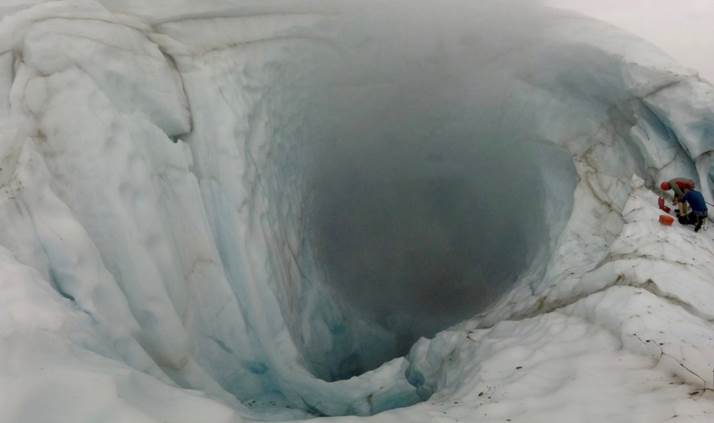
“This big, massive mountain is rotten,” Glyn Williams-Jones, a volcanologist at Simon Fraser University, told CBC News in a feature article about the volcano.
“It’s been growing for two million years, and over that time, we’ve had all of these gases and acid fluids coming through the rock and, slowly but surely, changing into weaker rock. And that weaker rock fails.”
Most people aren’t aware that a string of ancient volcanoes arc all the way from Northern California to Alaska, including Mount St. Helens in Washington which erupted in 1980, killing 57 people. It’s that volcanic activity, millions of years ago, that is responsible for the mineralized fluids that bubbled up through fissures close to the Earth’s surface, creating some of Canada’s most prolific mines, including Premier, Snip and Eskay Creek in BC’s Golden Triangle.

Williams-Jones is certain that Mount Meager will erupt again. If it does, over 5,000 residents living within 60 km of the mountain would be in harm’s way. There’s a visible crack in the rock, and the flank is moving a few centimeters each month, another PhD-level volcanologist studying the mountain told CBC.
“It is very likely this slope will fail very soon,” he said.
In this article, we return to one of our favorite topics, climate change. Specifically we’ll take a closer look at the soon-to-be accelerated liquefied natural gas (LNG) industry in BC, after the first project, LNG Canada, was recently approved. In an earlier article we identified methane emissions as the worst, yet underplayed, effect of this pending environmental disaster. Here we’ll focus on another: what ramped-up LNG tanker traffic could do to a powerful BC symbol: killer whales.
The sound of silence
Unlike the Simon and Garfunkel song, the sound of silence in this article refers to the absence of mating calls from humpback whales, when a cargo ship passes by them.
It has long been suspected that engine noise from freighters, cruise ships and other large vessels disturbs cetaceans, the family of marine mammals that includes whales, porpoises and dolphins. In the spring of 2017, a group of scientists decided to study the phenomenon in the waters around the Ogasawara Islands of Japan.
Noticing that male humpback whales swimming close to freighters stop “singing” to attract females, the researchers examined the behaviour of 26 males. They found that fewer males sent out mating calls within 500 meters of the shipping lane than elsewhere, and that males within 12,000 meters of the lane either paused their calls or stopping singing completely, until at least 30 minutes after the ship had passed.
More importantly, the researchers also noticed that the noise from the ships impacted the ability of the whales to navigate and to identify food, a process known as echolocation. Cetaceans use sound to bounce off salmon and other prey in order to locate them.
A similar study in 2016 was done with killer whales (orcas), up the US West Coast as far as Puget Sound.
“The main concern of this is that even a slight increase in sound may make echolocation more difficult for whales,” said Scott Veirs, whose research was quoted in The Guardian. “That’s worrying because their prey, chinook salmon, is already quite scarce. Hearing a click off a salmon is probably one of the most challenging things a killer whale does. Hearing that subtle click is harder if there’s a lot of noise around you.”
Noise from the loudest ships was found to be 173 underwater decibels, which equates to around 111 dB in air – around the same level as a loud rock concert.
Concern about the effects of shipping on Pacific Northwest orcas led to a Washington State task force voting this week to recommend a 3 to 5-year moratorium on whale-watching tours.
Note that as our oceans warm due to climate change they become more acidic due to increased co2 absorption – this change in ocean acidity will allow sounds to travel up to 70 percent farther underwater. This will increase the amount of noise in the oceans further affecting the behavior of marine mammals like our killer whales.
Oil vs whales
Followers of the Kinder Morgan debacle, or victory, depending on which side of the pipeline you’re on, know that the southern-resident killer whales (SRKW) played an important part in killing the project, or putting it on ice indefinitely. Loved by Canadians, the animals were put on the endangered species list in 2003. They are also the reason for a booming whale-watching business that attracts thousands of visitors to British Columbia every summer.
The $7.4 billion pipeline, actually the twinning of an existing one, would have significantly expanded the capacity of the pipeline to carry oilsands crude from Alberta to a terminal in Burnaby, a Vancouver suburb.
But Texas-based Kinder Morgan gave up on it this past summer, due to strident opposition from the BC government, First Nations and environmental groups.
The federal Liberal government then declared it would purchase the project using $4.5 billion of taxpayers’ money.
Among the arguments by opponents, were that risks to endangered orcas (there are currently only about 76 SRKW remaining) were ignored when the project was approved by the federal government last year.
One First Nation claimed that “the noise pollution alone is enough to make the song of the southern resident killer whales go silent by wiping out this endangered species.”
The BC government agreed, and also opposed Trans Mountain due to the threat of an oil spill; continually reminding the public that the pipeline would mean a 7-fold increase in tanker traffic.
“Today’s announcement by the federal government does not reduce the risk of a diluted bitumen spill and the impact it would have on B.C.’s economy or environment. It does not change the course the province of British Columbia has been on since it has been sworn in in July 2017,” BC Premier John Horgan said on hearing the feds would buy the pipeline from Kinder Morgan. “I will continue to do my best to protect B.C.’s interests ensuring our coasts, our water, our land are kept pristine.”
Politicians’ hypocrisy
Apparently that meant going to war, so to speak, with Alberta. When the BC NDP said it would hold consultations to consider restricting the flow of bitumen through the province, Alberta balked. Rachel Notley and her NDP, supposedly in the same ideological camp as Horgan’s party, temporarily banned the import of BC wine (a complete joke), then passed Bill 12, giving Alberta the right to turn off the oil and gas taps to other jurisdictions.
The hypocrisy of the BC NDP’s position became apparent in September when it welcomed a final investment decision by Shell and its partners to go ahead with LNG Canada in Kitimat – after a $C5.3 billion tax break by BC’s NDP. The FID announced on Sept. 30 came a month after the Federal Court of Appeal quashed approval of the Trans Mountain pipeline.
LNG Canada will consist of an export plant that cools the natural gas to a liquefied form using a combination of hydro-based electricity and natural gas, states LNG Canada. The pipeline, called Coastal GasLink, will be built and operated by TransCanada. It will extend from the Montney natural gas region in northeastern BC to the LNG terminal in Kitimat. Initially LNG Canada will export LNG from two processing units or “trains” for an estimated 14 million tonnes per annum. The plan is to double capacity to four trains or 28 mtpa.
Why is LNG Canada going ahead while the Trans Mountain pipeline expansion is tied up in more consultation? You only have to follow the money to find out why.
Horgan’s NDP government approved the $10.7 billion Site C dam last year, knowing full well that it would be needed to power LNG Canada and future LNG plants, which are in the works. Add in the cancellation of Kinder Morgan, the fact there are only so many pipeline routes through mountainous BC, and a $5.3 billion tax break given to LNG Canada, and the evidence only points in one direction: the BC NDP.
The two-faced nature of BC’s provincial politicians – on the one hand rejecting Kinder Morgan’s Trans Mountain project but then embracing LNG Canada – would be explainable if there was some good science behind LNG versus oil. But there’s not. In fact the evidence suggests strongly that LNG is worse for the environment and even more of a risk to the dwindling orca population.
According to a recent piece in The National Post, LNG will bring more marine traffic to BC’s waters than Trans Mountain would – about 350 LNG tankers per year compared to 300 oil tankers.
If the argument is that ships endanger whales, the only difference between oil and LNG is that Kinder Morgan’s tankers would travel through southern resident killer whale territory, and the LNG carriers through northern killer whale territory, where there are admittedly more whales. Are LNG carriers quieter than oil tankers? Likely not.
The politicians refuse to allow more oil tankers around Vancouver, where the routes are actually less dangerous, and prone to bad weather, than in northern BC. But they’re okay with LNG tankers floating around Kitimat and Prince Rupert.
The federal government is equally to blame here for its hypocrisy too.
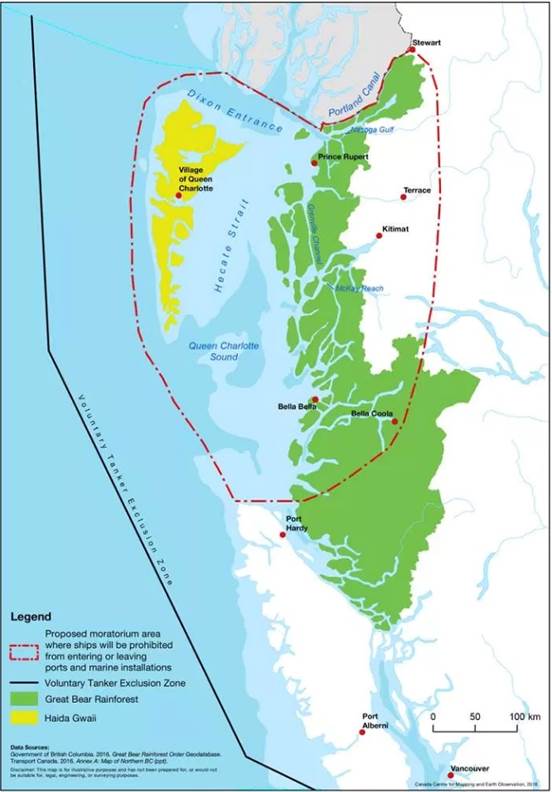
Last year the Justin Trudeau Liberals passed Bill C-48, the Oil Tanker Moratorium Act, which stops crude oil tanker traffic on the northern coast of BC – thus formalizing a “voluntary” Tanker Exclusion Zone that’s existed since 2015.
But here’s the thing. The ban sweeps practically every oil product up in it, including partially upgraded bitumen, synthetic crude oil, pitch, slack wax and bunker C fuel oil.
Excluded from the bill are gasoline, naphtha, jet fuel, propane and, you guessed it, liquefied natural gas (LNG). The exclusion essentially allows the unlimited expansion of a new LNG industry in BC – to the delight of the BC Liberals who came up with the idea in the first place, and now the NDP which has embraced LNG as an attractive and lucrative (in the form of taxes and royalties) form of clean energy.
Dirty LNG
As we have written, extracting natural gas through hydraulic fracturing, transporting it to a terminal, and then super-cooling it for transport in tankers, is not clean energy; in fact it may even be dirtier than coal.
To turn it into liquid form, the gas must be cooled to 163 degrees below zero. To do that requires a great deal of power, with massive compression units running 24/7. Where does that power come from? In most cases, the same fracked natural gas is used to run the compression units, which pretty much defeats the purpose of LNG as “clean”.
According to a new study by Wood Mackenzie, LNG will be the biggest source of carbon emission growth by 2025 – due to strong demand from Asian buyers.
For more read our LNG: Another environmental disaster coming to BC
It’s pretty ironic isn’t it, that we here in BC, who purport to be so “green” (Former Vancouver Mayor Gregor Robertson wanted to make Vancouver the “greenest city on the planet” with bike lanes) are presiding over an industry that is going to belch natural gas and methane, which is 86 times more damaging than CO2 over a 20-year period.
Then we’re going to turn around and sell that gas to China, so that it can get off of coal and build natural gas plants that will be just as dirty, if not dirtier?
Natural gas is mostly methane (CH4), a potent greenhouse gas that is over 25 times more efficient than carbon dioxide at trapping heat in the atmosphere over a 100-year period. (the Intergovernmental Panel on Climate Change (IPCC) says methane is 86 times more damaging than CO2 over a 20-year period)
Fugitive methane emissions run from 1% to 9% of total natural gas life cycle emissions. In order for natural gas power plants to be cleaner than coal, methane emissions over the plant’s life cycle must be kept below 3.2%, according to one study.
Most methane leaks come from flaring excess NG instead of putting it into a pipeline. Think methane emissions are no big deal, just a cost of doing business? The journal Nature earlier this year published a study saying that the US oil and gas industry emits 13 million tonnes of methane a year, which is 60% higher than the EPA’s estimate.
What the frack?
How do we get the natural gas for LNG? We frack it. Most of the conventional natural gas formations in British Columbia have already been depleted. What’s left is “tight gas” trapped in shale rock formations, primarily the Montney in northeastern BC. According to the BC Oil and Gas Commission, only 22% of BC’s remaining natural gas reserves are conventional; the rest are unconventional, which involves fracking.

As use of fracking technology has increased worries are growing about its impact on our fresh water supply; it’s easy to see why:
- Fracking just one well can use 2 to 8 million gallons of water with the major components being water (90%), sand or proppants (8-9.5%), and chemicals (0.5-2%). One 4-million-gallon fracturing operation would use from 80 to 330 tons of chemicals and each well will be fracked numerous times. Many of these chemicals have been linked to cancer, developmental defects, hormone disruption, and other conditions.
- Cracked wells and rock movement frequently leak fracking fluid and gases into nearby groundwater supplies. Fracturing fluid leak-off (loss of fracturing fluid from the fracture channel into the surrounding permeable rock) can exceed 70% of injected volume.
- Methane concentrations are 17 times higher in drinking-water wells near fracturing sites than in normal wells. Hydraulic fracturing increases the permeability of shale beds, creating new flow paths and enhancing natural flow paths for gas leakage into aquifers.
- Fracking has also caused benzene poisoning among pregnant native women in northeastern BC – natural gas country – and is known to cause earthquakes.
More LNG plants, pipelines in the works
The $40-billion LNG Canada facility in Kitimat is only the first of many LNG plants likely to come.
Indeed the Canadian oil and gas industry is pinning its hopes on LNG for an oil patch revival, with growth in the oilsands stalled due to a glut of oil that has producers selling oil to the United States, Canada’s largest customer, at a major discount.
“If you get one plant through, you’ll get a second and third plant to follow much easier,” Steve Laut, vice chairman of Canadian Natural Resources Ltd., one of the country’s largest natural gas producers, told Bloomberg upon hearing about the LNG Canada announcement. “It gives confidence to the other proponents.”
According to Natural Resources Canada there are currently 14 liquefied natural gas export facilities proposed for BC and 6 for Quebec and Nova Scotia. Of the ones in BC, the largest in terms of export output are LNG Canada (14 million tonnes per annum, doubling to 28 mt pa), WCC LNG (15 mt pa, doubling to 30 mt pa), Stewart LNG (30 mt pa) and Steelhead LNG (24 mt pa).
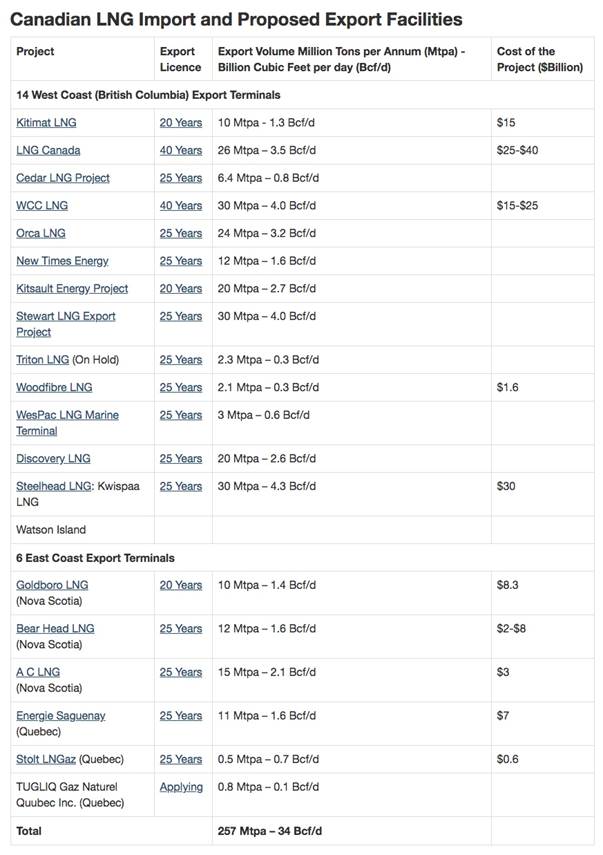
LNG Canada is going into Kitimat, WCC LNG is slated for Prince Rupert, Steelhead LNG on Vancouver Island, and Stewart LNG at Stewart, just inland from Prince Rupert at the head of the Portland Canal.
The LNG Canada project includes a 670-km natural gas pipeline that will run from the Montney gas formation to Kitimat. We also know that Steelhead LNG is scoping out a pipeline route that would run from Chetwynd through Williams Lake, southwest to Powell River, underneath the Salish Sea, and terminating in Port Alberni. Pacific Northern Gas, which already runs an NG pipeline from Summit Lake – north of Prince George – to Kitimat, is reportedly planning to twin the existing pipeline (the Pipeline Looping Project) with another 525 kilometers of pipe, that would serve future LNG customers in Kitimat and Prince Rupert.
PNG’s parent company, AltaGas, is building a new propane export terminal in Prince Rupert. Dutch company Royal Vopak N.V. is considering Ridley Island in Prince Rupert for a new bulk terminal that would handle natural gas liquids, diesel, methanol and other liquids, according to Business in Vancouver.
Conclusion
If all of these LNG project and pipelines go ahead, the map below will look a whole lot different.

BC will start to look like Alberta, where much of the province is covered in natural gas pipelines, compared to just three currently installed in the province. That means more fracking, more methane released, more CO2 and other pollutants released into the atmosphere, and more tanker traffic – making it harder for orcas in both the southern and northern waters to find food and to mate, thus accelerating their population decline and possibly eliminating this majestic species from our ecosystem in a few years.
“This issue is as black and white as the killer whales they endanger. This is about our survival and the protection of our home, this inlet and the planet. They are making a big mistake, we will not allow this pipeline to be built.” Charlene Aleck, spokeswoman for the Tsleil-Waututh First Nation’s Sacred Trust Initiative, on Trans Mountain.
All because provincial politicians ignorant of science and hungry for tax dollars are pushing for an LNG industry in BC – thinking that it will be cleaner and greener than oil. They have an ally in the federal government, which has banned oil tankers from plying northern BC waters, but opened them up to LNG carriers. Trudeau’s Liberals have also said they will contribute $275 million to LNG Canada. Meanwhile taxpayers are on the hook for $4.5 billion dollars for the Canadian government’s insane purchase of a crude oil pipeline that will very likely never be built, yet makes more sense than LNG.
We are already seeing the effects of climate change in retreating glaciers – one of which caused a massive landslide near Pemberton – not too far from the site of another proposed LNG plant, Woodfibre LNG, across from Britannia Beach on Howe Sound. (locals are already worried about that – read Rafe Mair’s article)
Isn’t it a huge irony that while scientists are screaming about global warming (the signs are everywhere, just look at retreating glaciers right here in BC causing massive landslides and now volcanoes that can trigger eruptions and more landslides; melting Arctic permafrost cauldrons burping up methane; rising seas; warmer oceans triggering hurricanes; forest fires, droughts, record heat waves, etc.), BC politicians, NDP and the Green Party, want to develop an industry that will accelerate fracking on a massive scale, destroying billions of gallons of fresh water, poisoning people with benzene and filling the skies with methane, a greenhouse gas 85 times worse than carbon dioxide? All so we can sell our natural gas to China!!!
Richard (Rick) Mills
Ahead of the Herd is on Twitter
Ahead of the Herd is now on FaceBook
Ahead of the Herd is now on YouTube
Legal Notice / Disclaimer
This document is not and should not be construed as an offer to sell or the solicitation of an offer to purchase or subscribe for any investment.
Richard Mills has based this document on information obtained from sources he believes to be reliable but which has not been independently verified.
Richard Mills makes no guarantee, representation or warranty and accepts no responsibility or liability as to its accuracy or completeness. Expressions of opinion are those of Richard Mills only and are subject to change without notice. Richard Mills assumes no warranty, liability or guarantee for the current relevance, correctness or completeness of any information provided within this Report and will not be held liable for the consequence of reliance upon any opinion or statement contained herein or any omission.
Furthermore, I, Richard Mills, assume no liability for any direct or indirect loss or damage or, in particular, for lost profit, which you may incur as a result of the use and existence of the information provided within this Report.
Legal Notice / Disclaimer
Ahead of the Herd newsletter, aheadoftheherd.com, hereafter known as AOTH.Please read the entire Disclaimer carefully before you use this website or read the newsletter. If you do not agree to all the AOTH/Richard Mills Disclaimer, do not access/read this website/newsletter/article, or any of its pages. By reading/using this AOTH/Richard Mills website/newsletter/article, and whether you actually read this Disclaimer, you are deemed to have accepted it.




